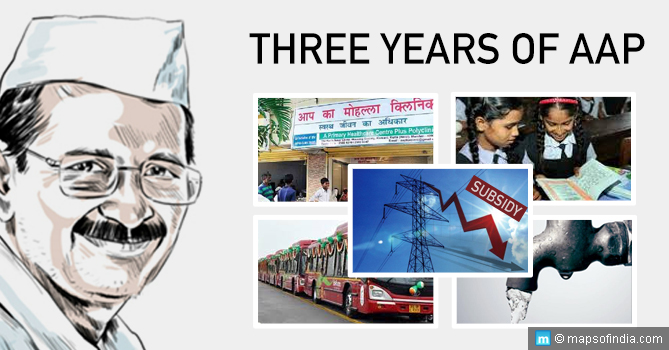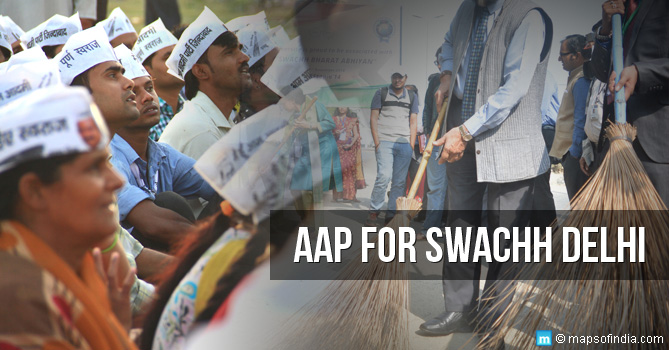On February 14, the Aam Aadmi Party completed three years in office. The party had stormed to power in February 2015 by bagging 67 of the 70 seats in the Delhi assembly. But the past three years have not been a smooth one for the party. AAP has witnessed ups and downs and has faced obstacles in the implementation of several schemes. Nevertheless, the party has introduced several schemes that have been much appreciated and have helped to improve the lives of the people of the city to a great extent.
Achievements of the Aam Aadmi Party
Healthcare
The Aam Aadmi party came out the unique Mohalla Clinic Scheme. The scheme was not only appreciated by the people of Delhi, but also by eminent figures like the former United Nations secretary general Kofi Annan. Former WHO director-general Gro Harlem Brundtland too lauded the scheme as neighbourhood clinics would help people save time and lessen the crowd at hospitals thereby resulting in their better utilization. Currently, there are 180 mohalla clinics in the city, of which 160 are operational. However, the government has promised 1,000 mohalla clinics in its 2015 poll manifesto.
Services such as surgeries and radio-diagnosis tests if unavailable or having a long waiting period at government hospitals in the city are being provided free of cost by the government at empanelled private centers.
Education
Education has been a top priority for the Aam Aadmi Party. The government allocated an amount of Rs 11,300 crore in its 2017-18 budget to build around 400 new libraries and 10,000 new classrooms. The government has already constructed 8,000 classrooms. Under the Higher Education Guarantee Scheme, the government is also providing education loans up to Rs 10 lakh.
Transport
Even though AAP has strived to provide people with an efficient transport system, the government has fallen short of its promises. As opposed to the target of at least 10,000 buses by December 2018, the government has promised 3,000 buses by the end of the year. These would include 1,000 electric buses and 2,000 non-AC standard floor buses. The government has also approved the opening of five new bus depots by the end of the year.
To combat the growing levels of pollution in the city, the government introduced the odd-even scheme; however, experts lambasted the scheme calling it a short-term measure and having little impact.
Hygiene
In the past three years, the Delhi government has constructed 21,000 community toilets. But this is short of the target of two lakh public toilets, as promised in the 2015 manifesto.
Other areas
The government provided a subsidy of 50 percent on electricity bills, which is still continuing. Delhiites have not been burdened with major power hikes. Free water is being provided up to 20 kiloliters. Delhi government has also recommended minimum wage hike for unskilled, semiskilled and skilled workers.
The challenges
The AAP government has been at loggerheads with the Lieutenant Governor of Delhi Najeeb Jung on a number of issues. The problems have somehow continued with the present LG Anil Baijal. In December 2017, Baijal had stalled the AAP government’s proposal to deliver 40 public services such as caster certificates, driving licenses, new water connection, etc, right at the doorsteps of the people.
Problems continued for the AAP as in December 2018, 20 AAP MLAs were disqualified for holding an office of profit. Meanwhile, AAP stated that the party was not given a chance to be heard.
Delhi being a
Further, Delhi is a Union Territory and the central government has powers over certain services. This has created friction between the AAP and the BJP. MCD is controlled by the BJP; however, people of the city look to the AAP for cleanliness. Similar is the case with DDA which is under the control of the central government.
To Know More About Aam Adami Party
10 Reasons Why The Aam Aadmi Party Must Form Its First Government





